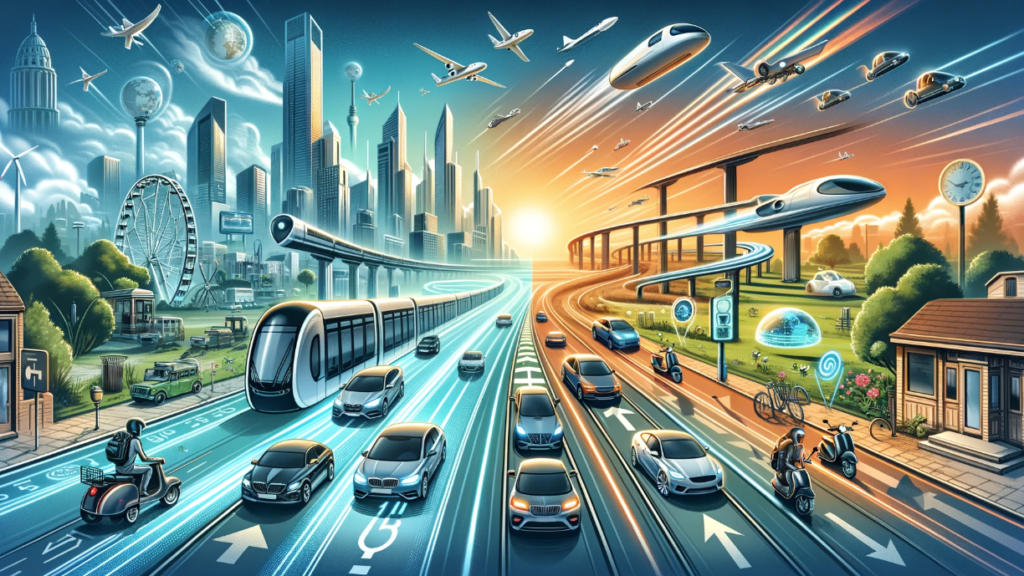Lesson 26.
The Future of Transportation (交通の未来)

▮ Explanatory Text:
The future of transportation is on the brink of a revolution, driven by advancements in technology, environmental concerns, and shifting societal needs. Innovations such as electric vehicles (EVs), autonomous or self-driving cars, high-speed rail systems, and even the prospect of flying cars and drones are redefining how we think about mobility. These developments promise to make transportation more sustainable, efficient, and accessible, potentially reducing traffic congestion, lowering emissions, and enhancing urban livability. However, they also pose challenges in terms of infrastructure, regulation, safety, and equity. This topic explores the potential impacts of these transportation innovations on society, the environment, and the economy, considering both the opportunities they present and the hurdles that need to be overcome.
▮ Common Phrases:
1. Autonomous vehicles could…
2. Electrification of transport aims to…
3. High-speed rail offers an alternative to…
4. The adoption of new transportation technologies requires…
5. Addressing the environmental impact of transportation involves…
▮ Example Sentences:
1. Autonomous vehicles could significantly reduce traffic accidents and improve road safety.
2. Electrification of transport aims to decrease dependency on fossil fuels and reduce greenhouse gas emissions.
3. High-speed rail offers an alternative to air travel, providing faster and more energy-efficient intercity connections.
4. The adoption of new transportation technologies requires updates to infrastructure and regulatory frameworks.
5. Addressing the environmental impact of transportation involves investing in sustainable modes of transport and encouraging public transit use.
▮ Questions:
1. What are the most promising transportation technologies for the future, and what benefits do they offer?
This question encourages learners to explore various emerging transportation technologies and discuss their potential advantages for society and the environment.
2. How can cities and countries prepare for the transition to these future transportation systems?
Participants examine the infrastructure, policy, and societal changes needed to support the adoption of new transportation technologies.
3. What challenges do these new transportation modes present in terms of safety, privacy, and equity?
This prompts a discussion on the ethical and practical concerns associated with the future of transportation, including issues of data privacy, safety regulations, and access.
4. How will the future of transportation impact urban planning and the design of cities?
Learners explore the implications of transportation innovations for urban development, considering how cities might evolve to accommodate new modes of transport.
5. In what ways can the future of transportation contribute to environmental sustainability?
This question invites speculation on how advances in transportation technology can help combat climate change and promote a more sustainable future.
▮ Discussion Instructions:
Select a specific innovation in transportation that you find interesting or significant. Discuss its current state, potential for widespread adoption, and the impacts it could have on society, the economy, and the environment. Consider the challenges that must be addressed to realize its full benefits and how it might reshape our approach to mobility and urban living.







